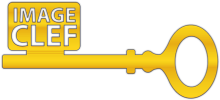- ImageCLEF 2025
- LifeCLEF 2025
- ImageCLEF 2024
- LifeCLEF 2024
- ImageCLEF 2023
- LifeCLEF 2023
- ImageCLEF 2022
- LifeCLEF2022
- ImageCLEF 2021
- LifeCLEF 2021
- ImageCLEF 2020
- LifeCLEF 2020
- ImageCLEF 2019
- LifeCLEF 2019
- ImageCLEF 2018
- LifeCLEF 2018
- ImageCLEF 2017
- LifeCLEF2017
- ImageCLEF 2016
- LifeCLEF 2016
- ImageCLEF 2015
- LifeCLEF 2015
- ImageCLEF 2014
- LifeCLEF 2014
- ImageCLEF 2013
- ImageCLEF 2012
- ImageCLEF 2011
- ImageCLEF 2010
- ImageCLEF 2009
- ImageCLEF 2008
- ImageCLEF 2007
- ImageCLEF 2006
- ImageCLEF 2005
- ImageCLEF 2004
- ImageCLEF 2003
- Publications
- Old resources
You are here
PlantCLEF 2024

multi-species plant identification in vegetation plot images
Schedule
- December 2023: Registration opens for all LifeCLEF challenges Registration is free of charge
- 11 March 2024: Publication of training data
- 21 March 2024: Competition Start
- 24 May 2024: Competition Deadline
- 31 May 2024: Deadline for submission of working note papers by participants [CEUR-WS proceedings]
- 21 June 2024: Notification of acceptance of working note papers [CEUR-WS proceedings]
- 8 July 2024: Camera-ready deadline for working note papers.
- 9-12 Sept 2024: CLEF 2024 Grenoble - France
All deadlines are at 11:59 PM CET on a corresponding day unless otherwise noted. The competition organizers reserve the right to update the contest timeline if they deem it necessary.
Motivation
Vegetation plot inventories are essential for ecological studies, enabling standardized sampling, biodiversity assessment, long-term monitoring and remote, large-scale surveys. They provide valuable data on ecosystems, biodiversity conservation, and evidence-based environmental decision-making. Plot images are typically 0.5 square meter in size, and botanists meticulously identify all the species found there. In addition, they quantify species abundance using indicators such as biomass, qualification factors, and areas occupied in photographs. The integration of AI could significantly improve specialists' efficiency, helping them extend the scope and coverage of ecological studies.
Task description
The task will be evaluated as a multi-label classification task that aims to predict all the plant species on the high-resolution plot images. The main difficulty of the task lies in the shift between the test data (high-resolution multi-label images of vegetation plots) and the training data (single-label images of individual plants).
Data collection
The test set is a compilation of several image datasets of plots in different floristic contexts, such as Pyrenean and Mediterranean floras, all produced by experts. The training set is composed more conventionally of observations of individual plants, such as those used in previous editions of PlantCLEF. More precisely, it is a subset of the Pl@ntNet training data focusing on south western Europe and covering 7.8k plant species. It contains about 1.4 million images extended with some images with trusted labels aggregated from the GBIF platform to complete the less illustrated species.
| Single plant training set | Metadata | Pretrained models | Vegetation plot test set |
Using additional data or metadata is permitted on condition that for each run with external data, you submit an equivalent run with only the data supplied, to enable more accurate comparisons.
The training metadata file also includes a gbif_species_id, which can be used to find additional data on the GBIF platform, or to add images from the two previous editions of PlantCLEF. However, beware, species ids used during PlantCLEF2022&23 may have changed in the meantime as taxonomy is an active field of study and the plant identification platforms that contribute to GBIF are very dynamic. In addition, many active users are constantly improving the quality of identification on community platforms such as inaturalist or Pl@ntNet, and some images previously present in PlantCLEF2022&23 uring may have since been revised and changed species identification.
Self-supervised, semi-supervised or unsupervised approaches are strongly encouraged. Pre-trained models are provided.
Participation requirements
- 1. (Not mandatory) Subscribe to CLEF (PlantCLEF task) by filling this form
- 2. Submit your solution before the competition deadline. More info on a HuggingFace competition platform.
CEUR Working Notes submission
For detailed instructions, please refer to SUBMISSION INSTRUCTIONS.
A summary of the most important points:
- All participating teams with at least one graded submission, regardless of the score, should submit a CEUR working notes paper.
- Submission of reports is done through EasyChair – please make absolutely sure that the author (names and order), title, and affiliation information you provide in EasyChair match the submitted PDF exactly
- Deadline for the submission of initial CEUR-WS Working Notes Papers (for the peer-review process): 31 May 2024
- Deadline for the submission of Camera Ready CEUR-WS Working Notes Papers:: 8 July 2024
- Templates are available here
- Working Notes Papers should cite both the LifeCLEF 2024 overview paper as well as the PlantCLEF task overview paper, citation information will be added in the Citations section below as soon as the titles have been finalized.
Credit
This project has received funding from the European Union’s Horizon research and innovation program under grant agreement No 101060639 (MAMBO project) and No 101060693 (GUARDEN project).


